Exploring The Nature of Risk & How We Can Mitigate the Dangers of Packrafting
In the first of this three-part series, we explore the nature of risk, why we seek it out, and the gear we need to stay safe. Read part II and and part III.

By Chad Oelke
In our society, risk is a dirty word. Risk means exposure to accidents, squandered investment, or costly litigation. Risk threatens the predictable monotony of our daily lives, where we feel safe from danger, harm, or injury.[i] To eliminate risk, we have created a complex apparatus of education, industry, and technology that tries to insulate us from the dangers of our environment and the consequences of our own decision-making. The automobile industry is the finest example of this system in action. We make cars with air-conditioning and anti-lock brakes, build lights and signs to control traffic, and are subjected to the crushing monotony of driver’s education. In pursuit of the holy grail of safety, car manufacturers will soon remove the most dangerous element out of the equation—human error—with cars that drive themselves. The end result of this system is that risk seems to disappear. We casually commute at 80 mph on an icy winter road, molten hot mocha teetering in one hand while the other cranks up Wagon Wheel for the hundredth time, without even breaking a sweat about the consequences of an accident. The question is: why do we ever leave the protection of our cars and cubicles to go run some river in the middle of the wilderness on inflatable boats? If risk is a negative we should avoid, then why do we willing seek it out?
The answer is simple: for adventure. We go to the backcountry to explore, to challenge ourselves, to sweat in the sun and shiver in the rain and in doing so, we risk getting lost, getting hurt, or even getting a bad sunglasses tan. In the wilderness, risk is visible, and can be both inspiring and terrifying: we look in awe at the churning hydraulics of Lava Falls or the icefalls of the Wickersham Wall and imagine the consequences of failure. We are drawn to risk because it pushes our mental and physical limits. Dropping a tricky Class IV rapid, twenty miles into the Alaska Range, risk is something real – a knot in your stomach, a dryness in your mouth that isn’t just from a week-long diet of beef jerky and Snickers bars. Adventure logically entails risk[ii], and in contrast to our daily lives, risk can be positive.
Packrafting exemplifies this spirt of adventure: it is about exploring new water and routes, and leaving the bubble of the known for the unknown. Open a map: see that blue squiggle that runs down those unnamed mountains and into the Arctic Ocean? Is that creek floatable? Are there rapids where the river bends hard to the south and the topo lines stack up? With packrafting, you can explore off-trail and beyond the pages of the guidebook; the possibilities for trips are limited only by your imagination.
But adventure is not the only draw to packrafting. Packrafts’ stability and lightweight, which allows you to carry a weeks’ worth of food and a boat that can run Class IV rapids in one convenient 80L pack, makes them appealing to hikers and backpackers with little prior whitewater experience. But it is crucial to emphasize that packrafting is not backpacking on water. Packrafting accidents are on the rise because new boaters overestimate the capabilities of their craft and lack basic awareness of the risks of swiftwater travel. They flip on rapids they should have never run or hit rocks they could have easily avoided. They lose their boat and spend a hypothermic night in the wilderness with a soggy Cliff Bar as their only means for survival. Twenty miles from the nearest trailhead, the consequences of even minor accidents can be serious.
Make no mistake: from Class I to Class V, packrafting can be dangerous. By combining the remoteness of backpacking with the dangers of whitewater boating, packrafting multiplies our exposure to risk and its consequences. The variability of conditions while packrafting—where you may be floating unknown or rarely run waters, or accessing the put-in over icy passes—means that there is no simple calculus to stay safe in the backcountry. In contrast to our daily lives, we must think outside the bell curve and knowingly face risk.
The Right Gear
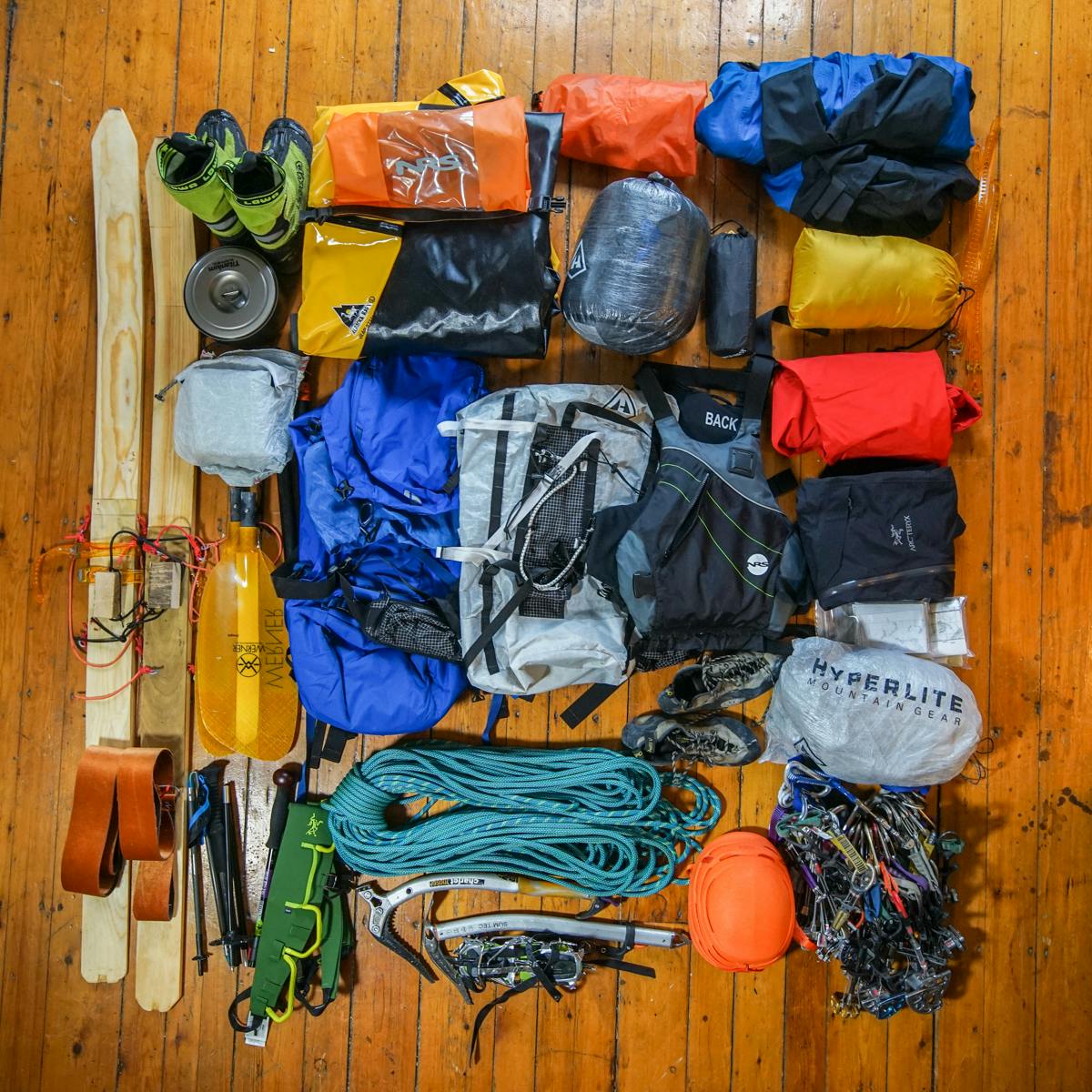
Every year, an endless procession of shiny new outdoor gear promises to help us go further, faster, and safer than we ever have before. We buy a jacket that will help us can conquer every Fourteener in a blizzard, without breaking a sweat. If we ever sprain an ankle on our Instagrammed vision quest, we carry gadgets that can summon helicopters out of the clouds with the push of a button and carry us to safety. Gear lists tend to propagate the myths that we “need” the latest and greatest contraptions to do a trip. As a result, here is a gear list disclaimer…
Packrafts and the safety gear we carry are awesome tools, but we should not become overly reliant on our gadgetry or assume they will keep us safe. In short, an ounce of common sense is worth a grand of Gore-Tex.
Dressing for Packrafting
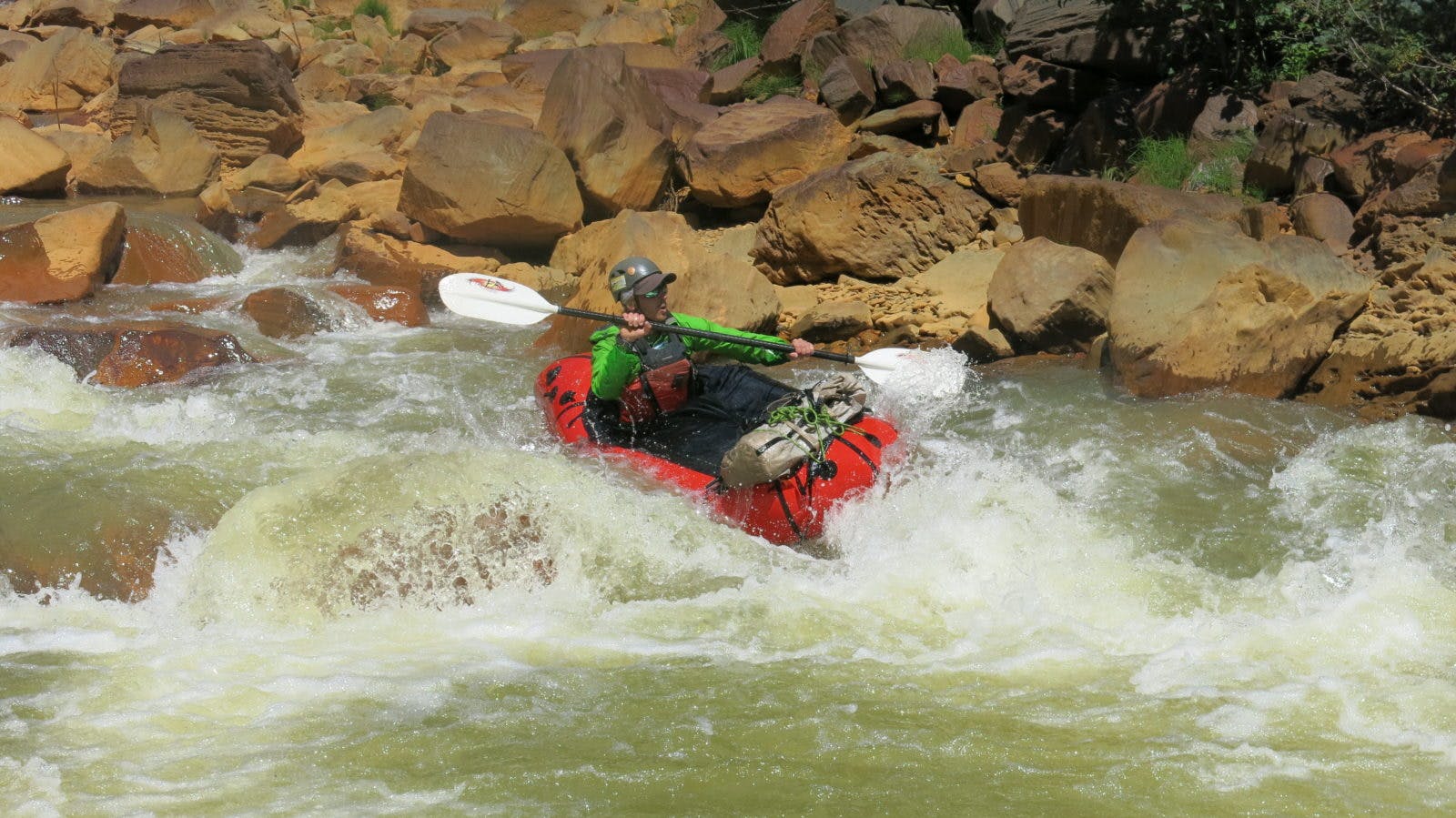
Cold water can be dangerous; whether it is a lake or a Class IV boulder garden. If your packraft overturns in the middle of an icy alpine lake, and you are wearing nothing but a bathing suit and some Haivannas, you are at high risk for hypothermia. Dunking in that freezing water also elicits a physiological response called the cold shock response[iii], where your body shunts blood away from your limbs to preserve core temperatures. This response can dramatically reduce your ability to swim away from hazards such as strainers, survive a prolonged foot entrapment, or boat effectively because your hands feel about as dexterous as a pair of wooden clogs. As a result, here is whitewater boating mantra #6: dress for the swim.
The temperature of the water, not the weather (which is predictably unpredictable in places like the Rockies or Alaska), will determine how we dress for packrafting. Floating the trickling, lukewarm Yampa in the middle of August? Well, you may be able to wear your favorite Def Leppard tank top and a killer pair of cut-offs. Floating an Alaskan creek…well, pretty much anytime? You’ll want to bring a drysuit.
Layering is a key way to stay safe boating cold water. Start with warm underlayers, such as merino wool tops and bottoms or a classy fleece onesie. Your outer layer should be waterproof clothing (drygear or, at the least, solid rain gear to act as “splash jackets”). Gloves, or pogies, are great to keep bloodflow to your hands and can double as handwarmers when you run out of hot cocoa. Being warm and dry on the river can make the difference between sharp decision making, and a fuzzy-brain failing to register a massive, river-wide strainer a second too late.
There is no clear metric about how to dress for packrafting. Floating a long Class I section of the Flathead in July? Because the risk of a swim may be relatively low, you may decide that a drysuit is not worth the weight. The important thing is to consider the risk of your trip—your exposure to objective hazards such as cold water or rapids and the consequences of a swim—and plan accordingly.
Packing for Packrafting
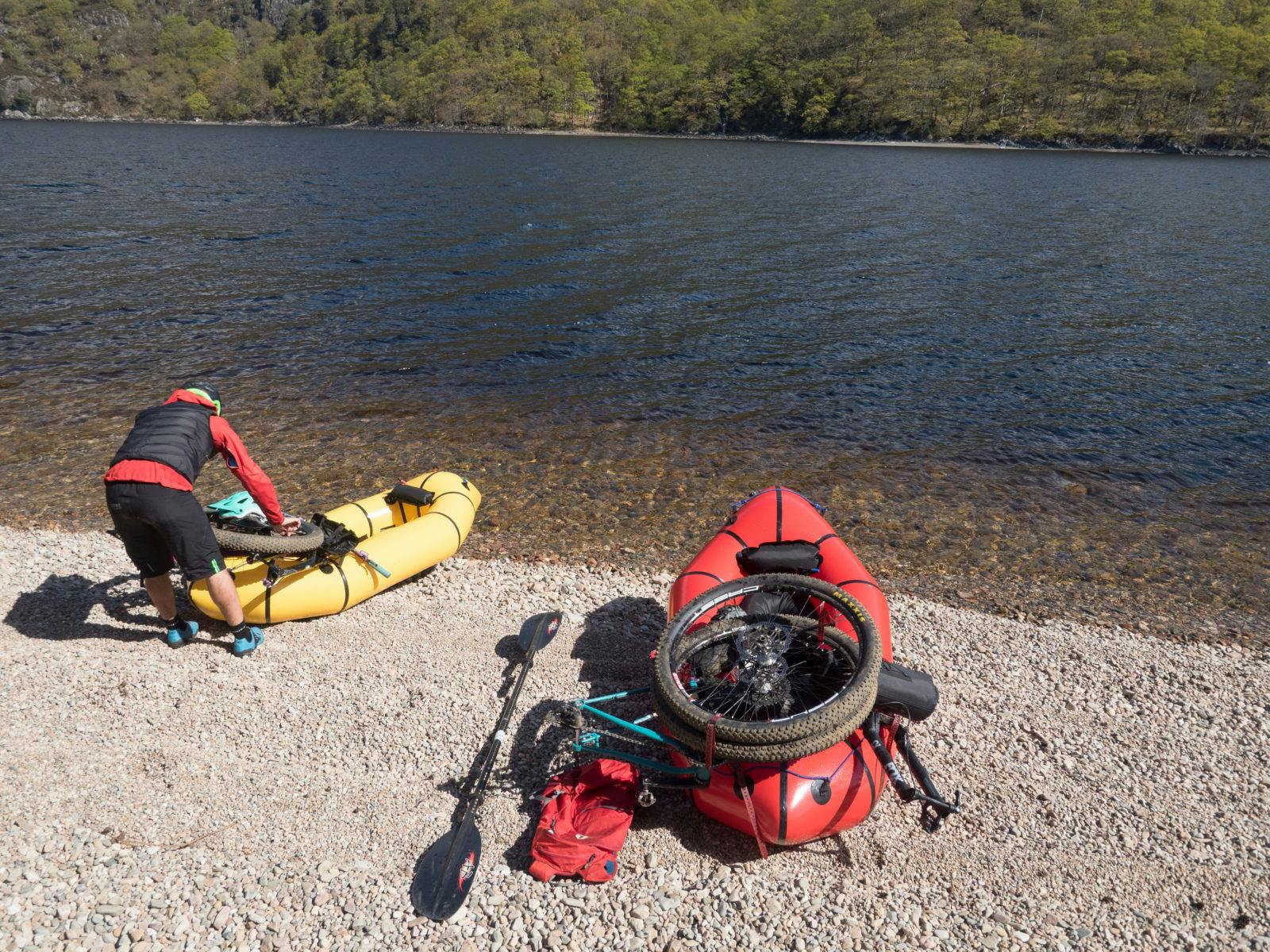
The biggest difference between whitewater safety gear for frontcountry boating (e.g., kayaking, rafting) and packrafting is weight. Hauling a full wrap kit, with ten pounds of static line, carabiners, and pulleys, may sound like a “safe” thing to do on a remote packrafting trip with significant whitewater. But hauling that extra weight to the put-in will slow you down, and may lead to a cascade of effects that will actually leave you less safe. You may arrive at the put-in late in the afternoon, when the water level is higher and the rapids are bigger. Extra weight increases the chance of injury and fatigue: that packet of Shrimp Ramen with Dorito crumble topping you always bring for dinner may suddenly seem woefully inadequate to fuel a full day of paddling.
We need to bring the lightest, safest gear to minimize risk: the “minimum tool” for the job. What this gear is will depend on the type of trip you are doing, the length of the trip, and difficulty of whitewater, amongst a whole suite of other factors. However, there are some things (in addition to your typical backpacking gear) you should carry on almost every packrafting trip.
Packrafting Safety Gear List
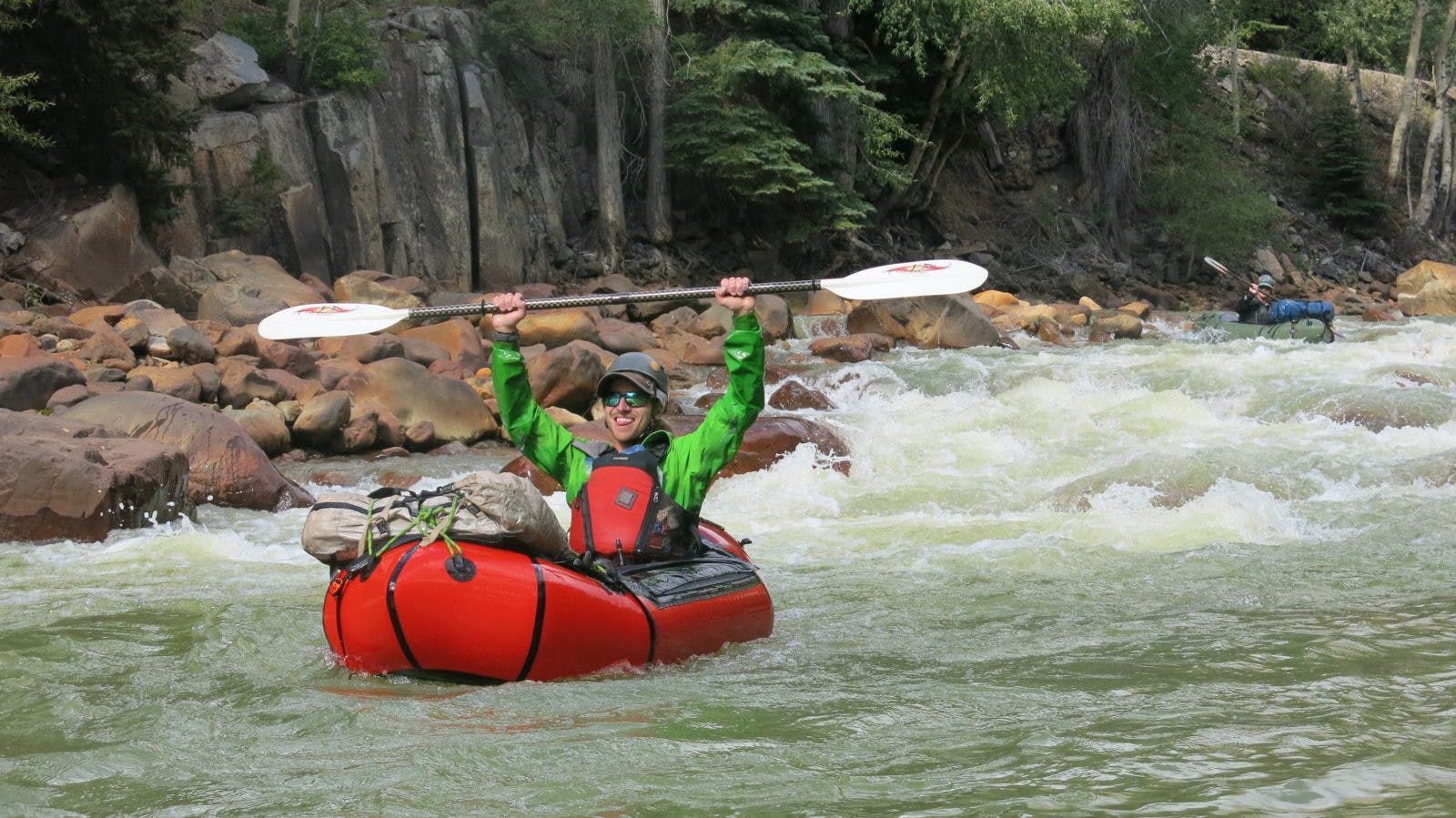
PFD: Unless you are paddling a duck pond in the middle of a perfect midsummer day, bring a PFD. They are lightweight and make great backrests for when you’re lounging around the fire with your friends bragging about all the gnar you’ve shredded. Bring a heavier duty Class V rescue PFD if you will be running significant whitewater, where the potential for a swim is high.
Helmet: This one depends on the water you are running. If the river is shallow, filled with boulders, or the consequences of a swim are significant you’ll want something to protect your noggin. Whitewater-specific helmets are best, because they are rated for the types of multiple impacts that occur if you get pinballed through a rapid. Climbing helmets or bike helmets are significantly lighter, but do not provide the same level of impact protection; they should be used when the risk of a swim is lower.
Knife: To cut yourself out of entanglements. 99% of the time it will just be cutting hunks of Tillamook. But if you ever find yourself flipped in a Class IV hole, underwater staring into the eyes of a dead carp, with some hillbillies’ 100# mono wrapped around your ankle and rapidly pulling you to a watery grave, well you would have wished you had that knife for more than just cutting cheese.
Throw Rope: To rescue your friend who is floundering in a recirculating hole or rapidly disappearing downriver. Just remember: don’t make a bad situation worse. Know how to use a throw rope and make sure your friend does too. Blindly tossing 50’ of 3/8” poly pro into a boiling mess of whitewater is a recipe for entanglement.
Repair Kit: You’ve just hauled 40 pounds of gear 20 miles into The Maze and are ready for a sunny cruise down the Green River. At the put-in you go to inflate your mighty craft and realize that the 7” Ka-Bar knife you brought to show off around the campfire has tragically sliced a hole in your packraft. The question is: were you savvy enough to bring along some Aquaseal and Tyvek tape to make an emergency field repair? Or will you try to play Rambo and see how far you can float with a patch made from rotting duct tape?
Ten Essentials on Your Person: What happens if you flip on a rock and lose your boat, along with all your carefully curated and color-coordinated outdoor gear with it? To hedge against catastrophe, carry the ten essentials in a drybag on your person. What the ten essentials means may vary based on your trip location and time of year. At a minimum, carry an emergency blanket, firestarter, compass/mirror, and hopefully some form of satellite communication device. You may think you are MacGyver, but it’s sure hard to start a fire and build an emergency shelter when all you have in your PFD is a soggy Cliff Bar and a beat up Safeway Club card.
No Dangling Things: Loose rope, webbing loops, or non-locking carabiners can become engagement hazards: eliminate them whenever possible.
A Drysuit and a Rescue Belt Don’t Make You a Superhero
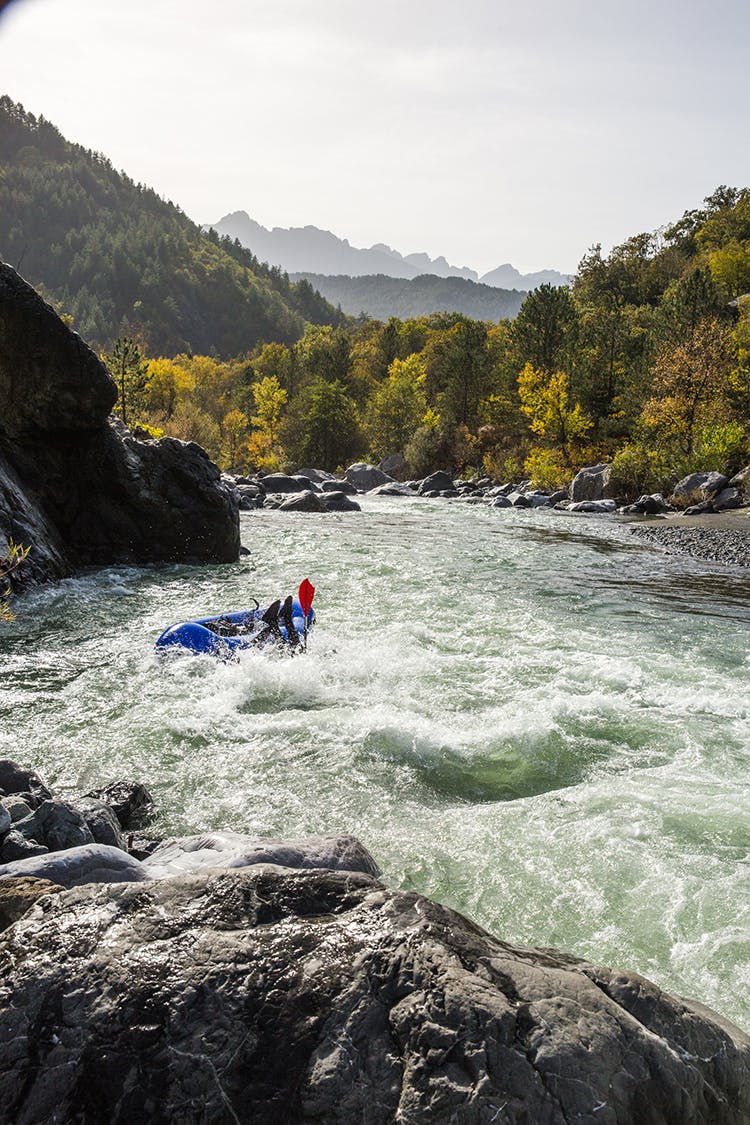
Remember that all the gear does not turn you into Batman. Bruce Wayne was just a rich kid with some cool toys until he trained with ninjas in the Himalayas and gained the discipline to become Batman; packrafters must also train and practice the skills necessary to become safe, proficient whitewater paddlers.
Taking a swiftwater safety course, such as a Packrafting Specific Swifwater Rescue Technician (PSRT), is a great way to learn to properly use safety gear and have the skills necessary to perform a rescue quickly and effectively. At the least, familiarize yourself with basic equipment such as throw ropes, understand the techniques (and risks) of swiftwater rescue, and talk with your group about safety gear.
Stay tuned for Part II, to be published next Friday.We’ll be exploring the dangers of swiftwater travel, including: the basics of reading water; anticipating river flow and force; how bends, gradient, and constrictions change river flow; understanding river features: eddies, waves, and holes; reading rapids; and river hazards to avoid: floods and trees.
Chad Oelke first learned the value of swiftwater rescue during two seasons as a commercial raft guide. Recently, he has honed his safety skills working as a Backcountry Ranger for the NPS in Alaska. Although the sunny oak forests of Northern California are his native home, the author prefers the bog and brush of Interior Alaska to almost anywhere else on the planet. Besides packrafting, his hobbies also include kayaking, fly-fishing, and endlessly fixing his 91′ Toyota Pickup.
[i] Cline, Preston (2003). Re-Examining the Risk Paradox. In Proceedings of the Wilderness Risk Management Conference (p.23-27). National Outdoor Leadership School, Lander, WY. P. 23.
[ii] Miles, J.C. and S. Priest (1990). . State College, Venture Publishing, PA.
[iii] Phillips, Ken. (2012). National Park Service Swiftwater Rescue Manual. Washington D.C., District of Columbia: Department of the Interior, National Park Service. P.11.

